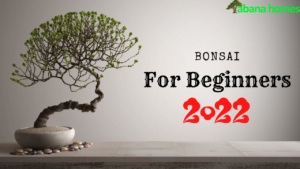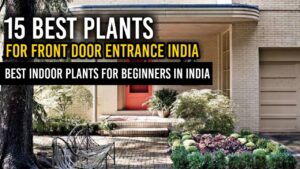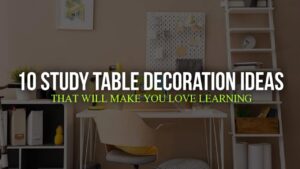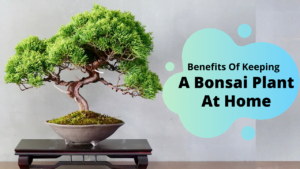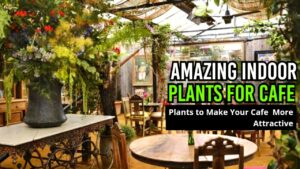Is it hard for you to grow houseplants in a particular room in your home because you do not have enough light? There is good news! The 35+ indoor plants listed below thrive in very low-light conditions.
It doesn’t matter if you don’t consider yourself much of a plant enthusiast; there are many indoor plants that are easy to maintain, forgiving, and low-light tolerant. Some even thrive in shadier areas.
Also, you are in the right place if you aren’t a plant parent yet because you haven’t discovered the perfect low-maintenance greenery. So, here are the best plants you can choose. They don’t require a spot on your already overcrowded windowsill.
Tip: If you are unsure what kind of light you have, consider this: a south-facing room with lots of windows has good lighting. West- or east-facing rooms have medium lighting. No-window rooms or rooms facing the north are low-light rooms. If there are no windows in the room, you should leave the lights on 12 hours a day or rotate low-light plants into it for a few weeks before moving them back to a naturally lit room.
Best low-light indoor plants for your home
1. Cast Iron Plant
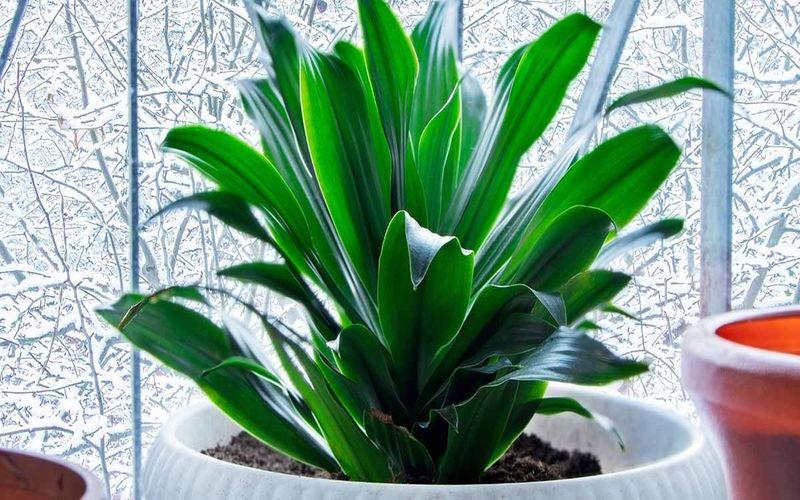
Its nearly indestructible properties make the cast iron plant an excellent choice for starting a new plant family. This plant can grow in shade and endure neglect. Plus, it adds moisture to the air while cleaning it as well, thus relieving dryness!
Stick your finger in the soil and if you can feel dry soil, you should water them. Light-wise, keep them away from direct sunlight, which can burn the leaves. If possible, place them in a north-facing window.
Light: Partial shade to full shade
Water: Moderate moisture
Color Varieties: Dark green foliage
2. Lucky Bamboo
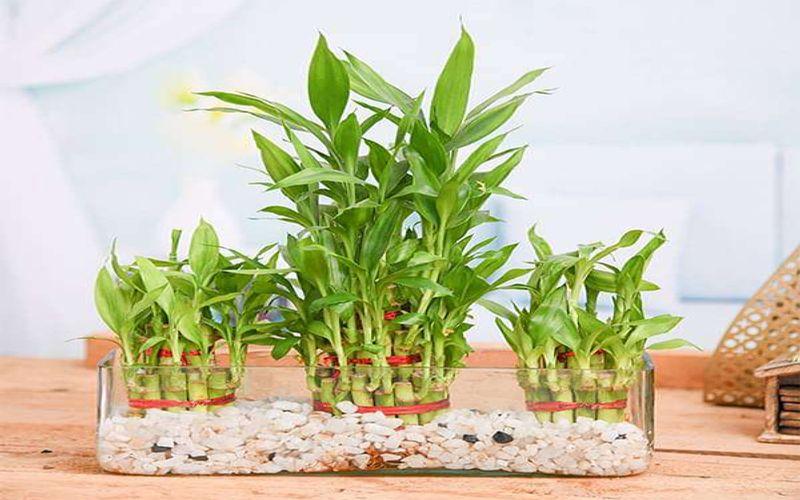
The plant is believed to bring good luck and fortune but thrives best in shady spots. You can keep it on a desk or a coffee table.
Moreover, you can grow this plant in either water or soil. They are easy to find in many offices and homes. In addition, lucky bamboo has earned the reputation of being an indestructible plant.
In light, lucky bamboo likes some light but will gladly thrive in full shade locations. However, just make sure to keep them away from the drafty areas of your home. Also, keep them away from your pets as they do have toxic properties.
Light: Partial shade to full shade
Water: Moderate to high moisture
Color Varieties: Green stalks and leaves
3. Devil’s ivy

Devil’s ivy gets its name from the fact that it grows vines even in the worst conditions. This plant is not suitable if it is planted outdoors where it can choke out other plants, but it’s perfect for growing indoors.
Light: Indirect light
Water: Water it when topsoil is half dry
Color Varieties: Heart-shaped green and yellow leaves
4. Chinese evergreen
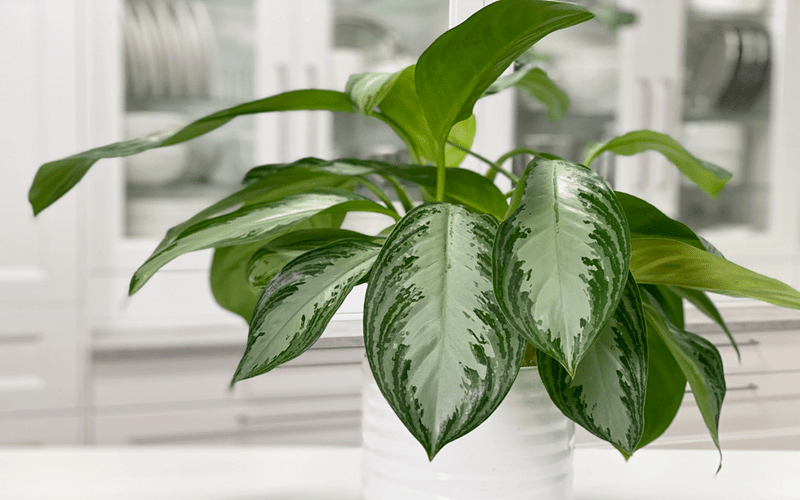
As the Chinese evergreen is the most durable indoor plant, it does well in low light.
The plant has oval, glossy green leaves on short stems. These evergreens thrive in shade, making them excellent low-light indoor plants.
Place the plant out of direct sunlight as it can burn the foliage. If you are growing variegated varieties, they will need bright, indirect light to produce the best color. However, all varieties can survive in shady conditions. Keep your pets away from this plant because it is toxic.
Light: Partial shade to full shade
Water: Moderate to high moisture
Color Varieties: Dark green to silver foliage
5. Sago Palm

Do you ever dream of having a palm trees in your home? Well, your dream can come true. The sago palm may not be quite tall as the one in Beverly hills. However, they are cute just like tall palms. In addition, they are easier to maintain.
Light: Bright, indirect light
Water: Moderate
Color Varieties: Dark glossy green leaves
6. Weeping Fig tree
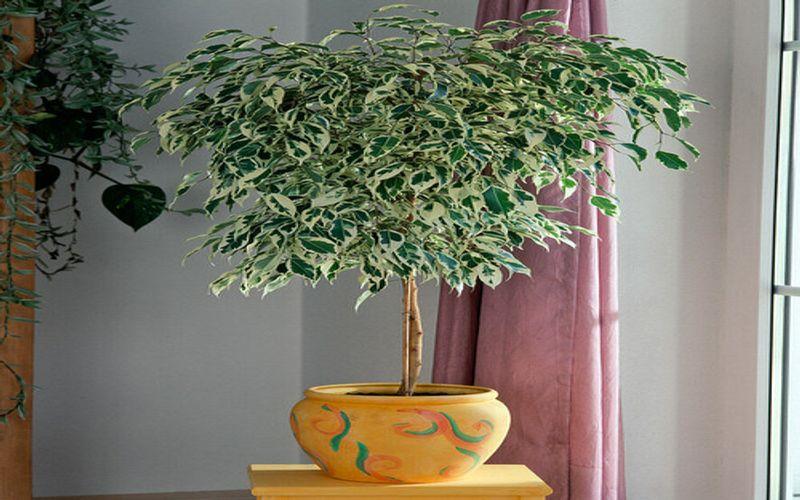
Do not let the sad name of the plant turn you off. This is a quick-growing tree that has the ability to add life to any corner of your house. In addition, they require little more than the occasional trimming and some regular watering.
Light: Bright but indirect light
Water: Regular watering
Color Varieties: Gray bark and shiny, green oval leaves.
7. Heart-leaf philodendron

This cutely named plant is also known as the Sweetheart plant. It has got its nickname because of the shape of its glossy leaves. This plant can easily handle dim rooms. You just need to pinch them to prevent them from growing in long, single stems.
Light: Bright indirect shade/sun
Water: Moderate
Color Varieties: Glossy green leaves
8. Bromeliads

Surprised to see a tropical plant on this list? This houseplant can thrive on fluorescent light alone. They enjoy growing in humid conditions like bathrooms.
Light: Indirect light
Water: Moderate
Color Varieties: Green leaves and pink, red, orange, and yellow flowers.
9. Silver Pothos
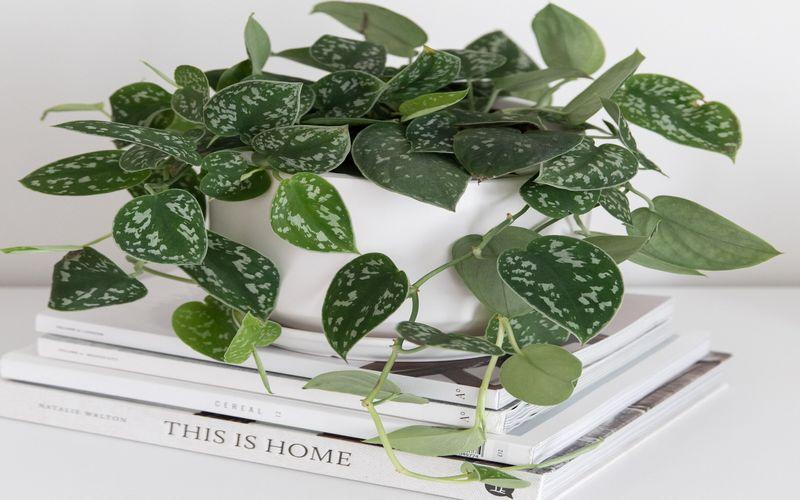
This plant stands out because of its heart-shaped vining and beautiful silver markings. Those silver markings are more prominent in brighter light and some may turn green in low light. However, this plant can survive in darker environments with slower growth.
They are also known as Satin Pothos. The plant is quite similar to golden Pothos except its matte green leaves are speckled in silver. Silver Pothos thrive in indoor conditions, including locations that don’t receive a lot of light. Bright, indirect light is best for the leaf color, but the plant will survive in dim light.
It is recommended to regularly mist your Pothos, as these plants love humidity. Also, the plant is toxic, keep them away from pets.
Light: Partial shade to full shade
Water: Moderate moisture
Color Varieties: Green and silver leaves
10. Nerve Plant
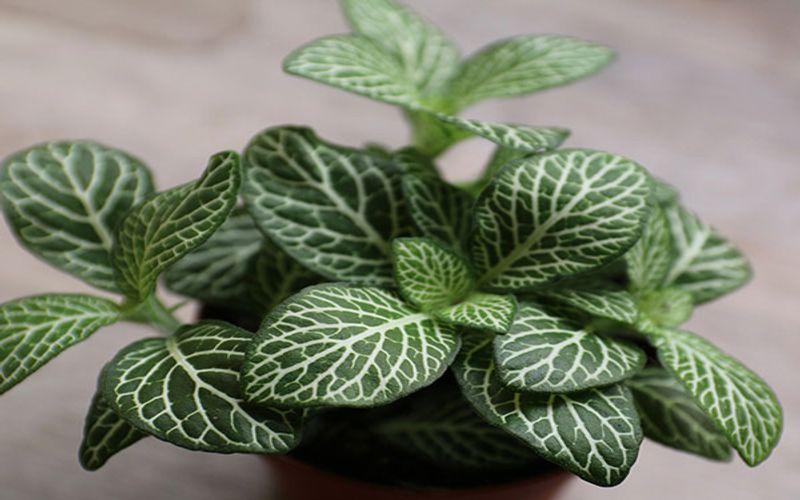
Nerve plants, or Fittonia, like brighter light, however, they can handle low light. Although more colorful varieties might prefer a little less bright with less sun.
Light: Bright, indirect sunlight
Water: Moderate
Color Varieties: Deep green leaves, other varieties in veins red, pink, white, and green.
11. Dieffenbachia
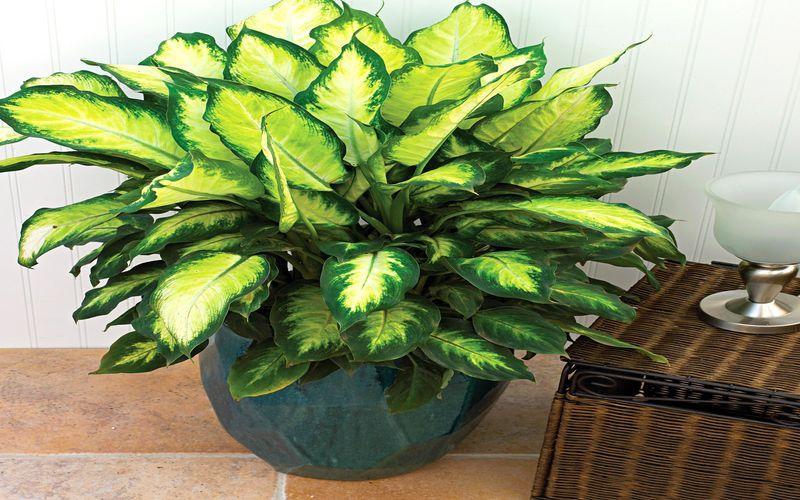
Dieffenbachia loves filtered light. So, try to use a curtain as a barrier between it and the sun. Try this barrier during the spring and summer as that time the plant is producing new and tender leaves.
Also, when it comes to colorful leaves, few houseplants offer several options such as Dieffenbachia. The gorgeous tropical plants have a wide range of speckled or splotched leaves in either yellow-and-green or white-and-green. Although they grow well in dark rooms, they do like some bright, indirect light to keep them from getting too leggy. Dieffenbachia is toxic, so keep it out of reach of children and pets.
Light: Low light or bright, indirect light
Water: When the topsoil is dry
Color Varieties: Yellow-and-green or white-and-green leaves
12. Christmas Cactus
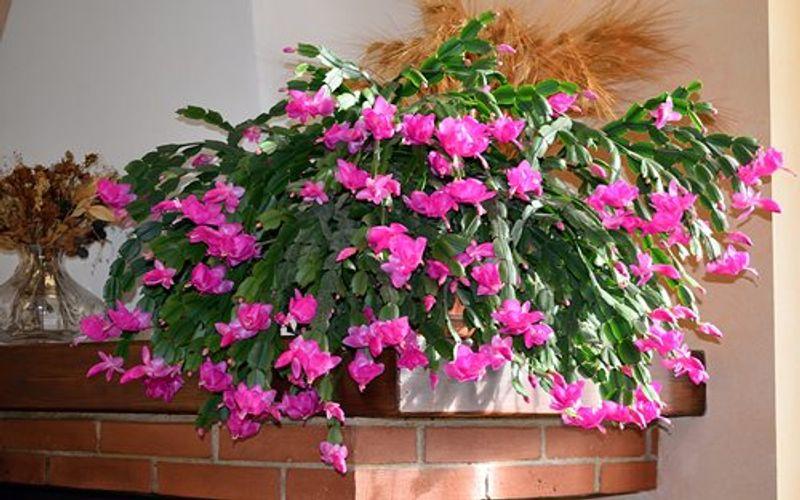
With Christmas Cactus, you do not have to worry about poking yourself on anything pointy! It has soft and rounded leaves. The best part? This cactus blooms pink flowers for an added pop of color. Moreover, they respond best to diffused light, so you do not have to keep them on the windowsill.
Light: Bright, indirect light
Water: Moderate
Color Varieties: Blooms in shades of fuchsia, yellow, salmon, pink, white, orange, or red.
13. Spider plant

This plant is super easy to grow. Hence, it is popular. In addition, it is easy to breed and share them with others. Also, the spider plant can tolerate a lot of neglect and thrives in indirect light.
Also, they are one of the most adaptable plants. They produce spider-like offshoots that dangle down from the parent plant. This incredible beauty can be grown as hanging or trailing plants in baskets or pots. Also, they survive for a long time in less than ideal low light conditions. This includes artificial light. But in water, provide them regular drink to prevent the soil from drying out.
Light: Partial shade
Water: Moderate moisture
Color Varieties: Green or variegated foliage
14. Calathea
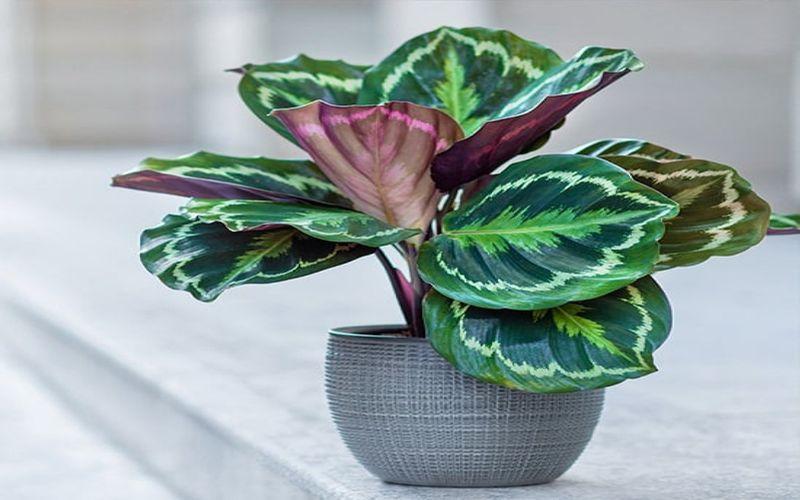
With its pink and red flecks, calathea adds an extra punch to your home. They prefer medium to low light. And they are non-toxic and pet safe.
Light: Medium-low light
Water: Moderate
Color Varieties: Dark green leaves
15. Snake plant

The Snake plants are some of the best low-light indoor plants you can grow. These succulents are striking in appearance and require less maintenance. The snake plant, also called mother-in-law’s tongue, is a long-lived plant that can grow for decades.
They prefer to grow in partial shade. However, they can tolerate quite shady conditions as well. But remember this plant is toxic. Hence, keep them away from your pets. Also, ensure not to overwater it, especially if it’s not in direct sunlight that dries out the soil. Overwatering will cause root rot and eventually kill the plant.
Light: Partial shade
Water: Moderate moisture
Color Varieties: Deep green foliage with gray-green stripes
16. Wax plant
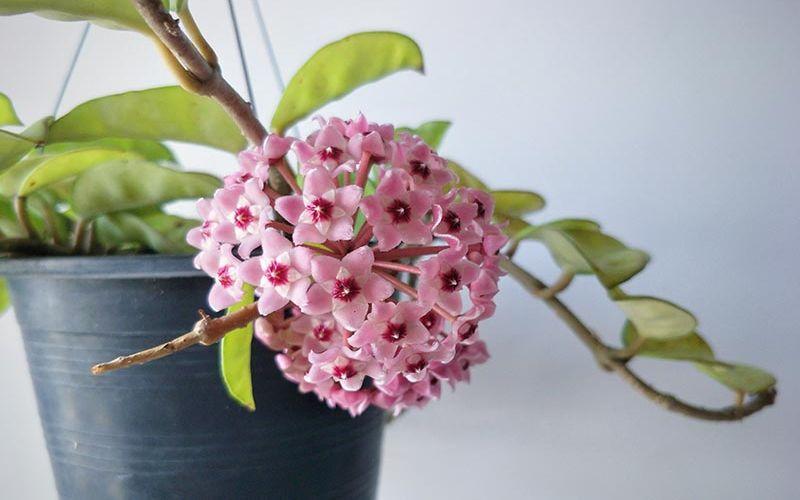
Wax plants are not picky houseplants. They prefer bright light but will do fine in lower light conditions. Moreover, this plant is super low maintenance. They will bounce back if you forget to water them, too. So, if you are one of those who forget to water the plant, this one is the best choice for you.
Light: Bright light to partial shade
Water: Moderate
Color Varieties: Cream colored with red to orange centers and red, white, or pink flowers.
17. Dragon tree

The upward-growing spiky leaves with a red outline make these plants totally stunning. But overexposure to the sunlight can damage them. Hence, maintain the balance and provide them some sun and some shade.
Also, they are quite easy to care for and very hardy. Indoors, the dragon tree does not reach more than six feet tall.
A window that receives bright, indirect light is the perfect location for them. They can survive in lower-light conditions but their leaves might grow smaller than usual. This tree is toxic to pets.
Light: Partial shade
Water: Moderate moisture
Color Varieties: Green foliage
18. Dwarf Umbrella Plant
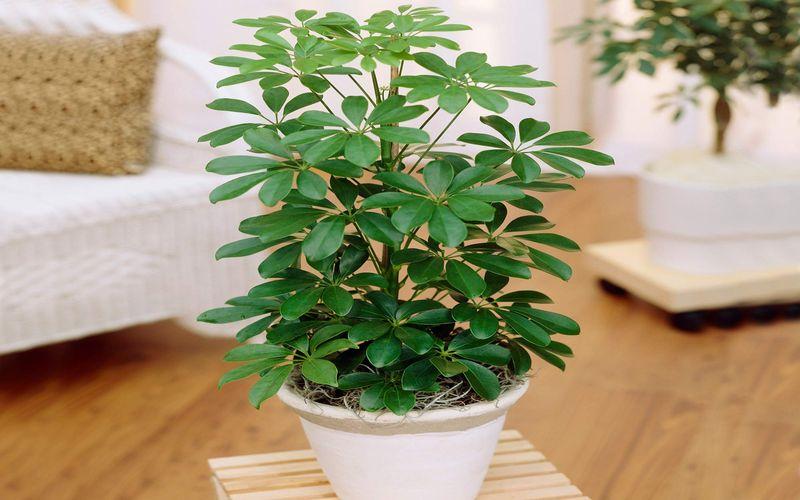
Dwarf umbrella plants also known as Schefflera Arboricola plants are great low-light indoor plants. This plant dislikes bright light and grows slowly. So, you do not have to worry about them outgrowing.
Light: Partial shade
Water: Moderate
Color Varieties: Green leaves
19. Peperomia obtusfolia
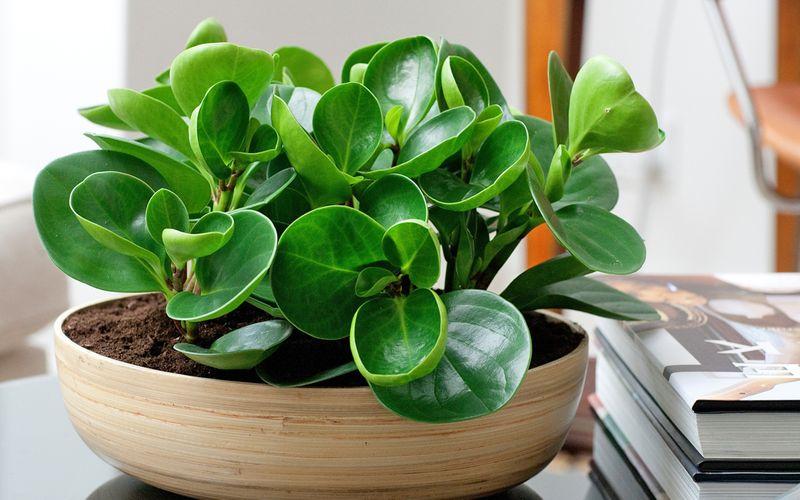
This cute little plant has thick, spoon-shaped leaves. Moreover, they are pet-friendly and low-light tolerant. In fact, too much sunlight can hurt this plant.
Light: Partial shade
Water: When the topsoil is dry
Color Varieties: Green leaves with silver stripes and red stems
20. Parlour palm

Parlour palm, also known as the Victorian parlour palm, is popularly resilient. Those pretty feathery leaves can add life to any corner of your home. They grow well in medium light. However, they can survive in low-light areas. Their cousin, the majesty palm, is another great option.
Light: Bright filtered sunlight
Water: Moderate
Color Varieties: Yellow-green stems and light-green leaves.
21. Staghorn Fern

The staghorn fern likes high humidity with indirect light. This quality makes them great shower plants.
Also, they are epiphytic. It means they grow naturally on other plants instead of in soil. As an indoor plant, they can grow mounted on wooden boards, making them beautiful natural art pieces. Additionally, they prefer shady spots. Because direct sunlight burns their leaves. While watering, ensure to allow them to dry out between waterings.
Light: Full shade
Water: Moderate moisture
Color Varieties: Green foliage
22. Bird’s Nest Fern

The ripple edges give the bird’s nest fern a beautiful, fun look. Also, these ferns are pet-friendly plants. It grows well in medium indirect light but can usually tolerate low indirect light.
Light: Indirect light
Water: Moderate Moisture
Color Varieties: Glossy green leaves
23. Ponytail Palm

This whimsical, Seuss-like plant looks adorable on a small tabletop plant or a full-on tree, but in any case, they are adaptable enough to survive in any light level.
Light: Medium to low light
Water: Moderate
Color Varieties: Dark green leaves
24. Money tree
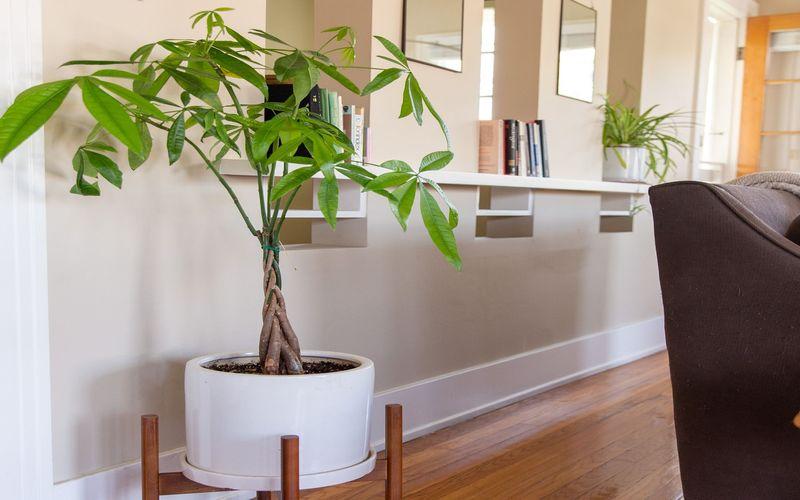
If you are looking for a larger indoor plant that can handle medium indirect light, opt for the money tree.
Light: Indirect light
Water: Deep but infrequent
Color Varieties: Green, bright white leaves
25. Monstera

The tropical monstera plant may seem incapable of surviving in anything other than direct sunlight, but these beauties will grow in low light. They will not grow as rapidly or as dramatically as they would in a brighter environment.
With Monstera, you can create a tropical getaway in your living room. They produce huge, bright green and stunning leaves. Moreover, they have a dense and bushy shape. If you get a small monstera you can repot it into a hanging basket. You can also keep your plant compact by pruning back the vining branches.
Water them whenever topsoil feels dry to touch. In addition, apply fertilizer once a month during the spring and summer.
Light: Indirect light
Water: When the top inch of soil is dry
Color varieties: Dark green leaves
26. Begonia Rex
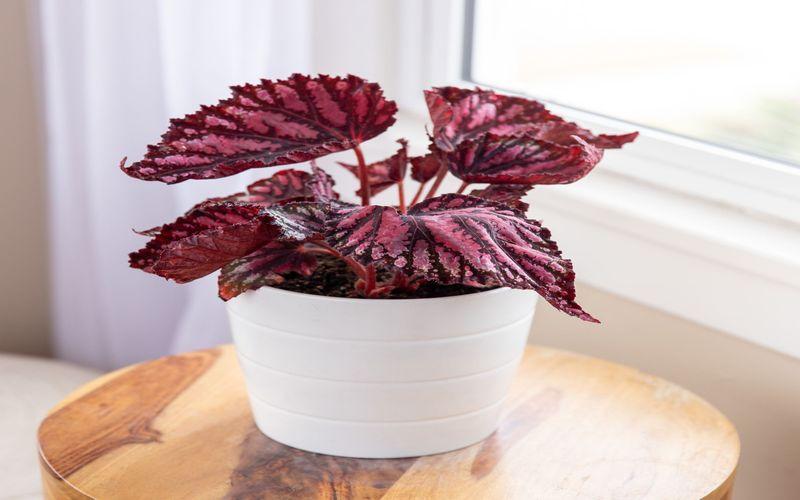
The deep red and purple swirls on the Begonia Rex plant are more vibrant when in direct light, they can still survive in low light conditions.
Light: Moderate to bright indirect light
Water: Regular
Color Varieties: Red, pink, silver, gray, purple, and dark green leaves
27. Dracaena Limelight
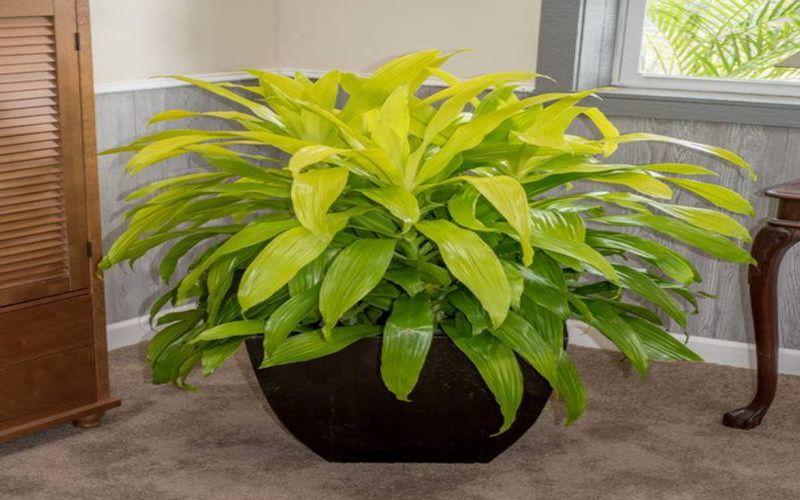
With full, bright, and wide neon leaves, this indoor plant is relatively easy to maintain. Also, it offers more than good looks. It can remove harmful toxins such as benzene, formaldehyde, xylene, and toluene from the air.
Light: Moderate sunlight
Water: Water when the soil has dried thoroughly
Color Varieties: Glossy foliage in colors of green and white, green, and yellow, with flecks of red
28. Kimberly Queen Fern
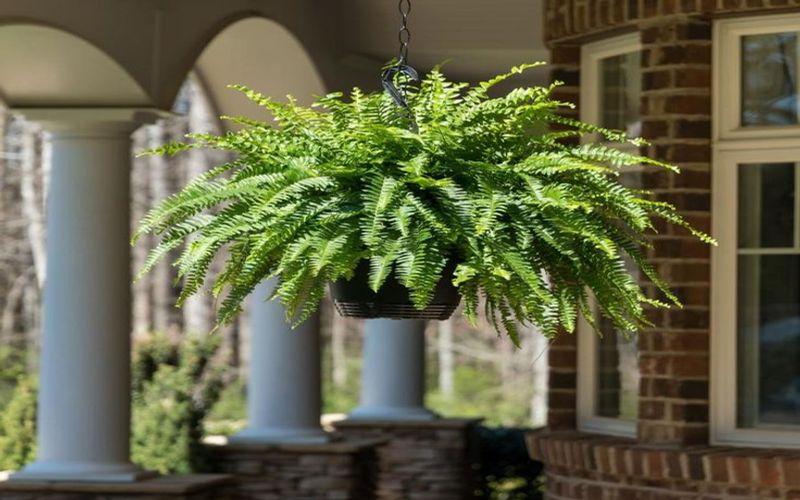
As mentioned above, ferns are easy-going and flexible plants. They can survive in most conditions, from low to bright indirect light. In addition, this variety is relatively compact and neater compared to other types of ferns.
Light: Low to bright indirect light
Water: Moderate
Color Varieties: Dark green fronds
29. Red Anthurium
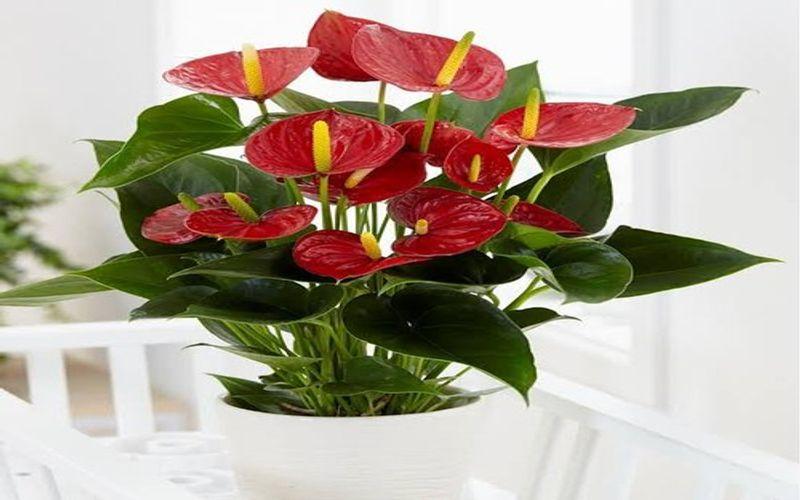
If you’re looking for a dash of color in your home, this red Anthurium is a perfect choice! The flamingo flower (Red Anthurium) can last up to eight weeks.
They belong to the genus of tropical plants with bright flowers and lush foliage. These plants can be grown indoors in high humidity and moist but not soggy soil. A place that receives bright, indirect light is best for them. But do not place them in direct sun, it can burn the leaves. Also, keep these plants away from pets as they are toxic in nature.
Light: Partial shade
Water: Moderate to high moisture
Color Varieties: Red, pink, or white flowers
30. Philodendron Brasil

Philodendrons Brasil is popular houseplants due to their ease of care. Also, they have the ability to add a jungle-like vibe to your home with their long green vines.
Make sure to regularly dust the vines to keep their best look alive. In terms of light, a window that receives bright but indirect sunlight is perfect.
They can tolerate a low-light environment but might experience leggy stem growth with sparse foliage. Also, keep them away from pets because they are toxic.
Light: Partial shade
Water: Moderate moisture
Color Varieties: Green foliage
31. ZZ Plant

The ZZ plant is a low-maintenance indoor plant that can survive even without natural sunlight. Hence, you will easily find it in many windowless offices. However, the ZZ plant does best with bright, indirect light.
Also, they can tolerate drought well and should be allowed to dry out between waterings. Keep ZZ plants away from pets because they are toxic.
Light: Partial shade to full shade
Water: Moderate moisture
Color Varieties: Dark green foliage
32. Golden Pothos
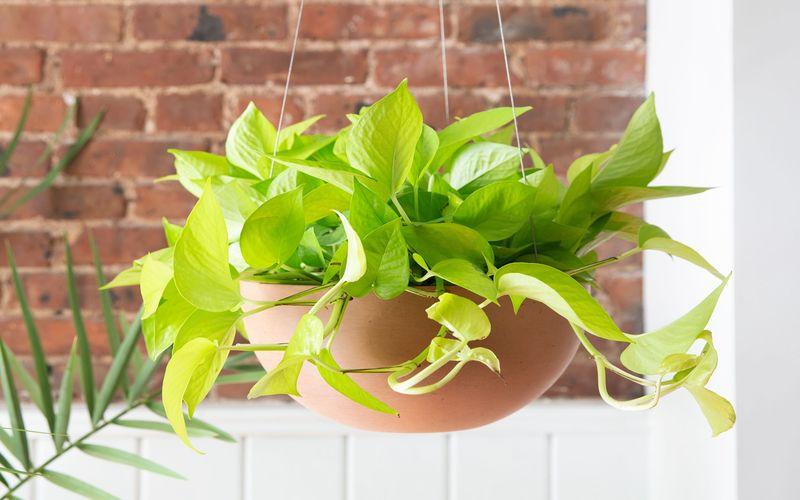
In addition to low light, golden Pothos thrives in conditions other plants cannot grow in, including a lack of water.
This makes them one of the most popular houseplants. Also, thanks to their attractive, durable, and easy-to-grow vines with smooth, leathery, heart-shaped leaves. Some varieties of Pothos have leaves with distinctive marbling alternating along rope-like green stems.
Additionally, ensure to loosen and dust the vines often to prevent them from becoming a tangled mess. Also, keep your pets away from this plant as it is toxic.
Light: Partial shade to full shade
Water: Moderate moisture
Color Varieties: Green or variegated foliage
33. English ivy

These plants can spread as a ground cover outdoors. But as a low-light indoor plant, English ivy offers a beautiful trailing effect in hanging baskets.
Locate your English ivy in a location that receives indirect light. Also, make sure to mist the plant to maintain the humidity. In addition, keep them in a cool room at night. This plant is also toxic, so keep your pets away from the plant.
Light: Partial shade to full shade
Water: Moderate moisture
Color Varieties: Dark green foliage
34. Peace lily
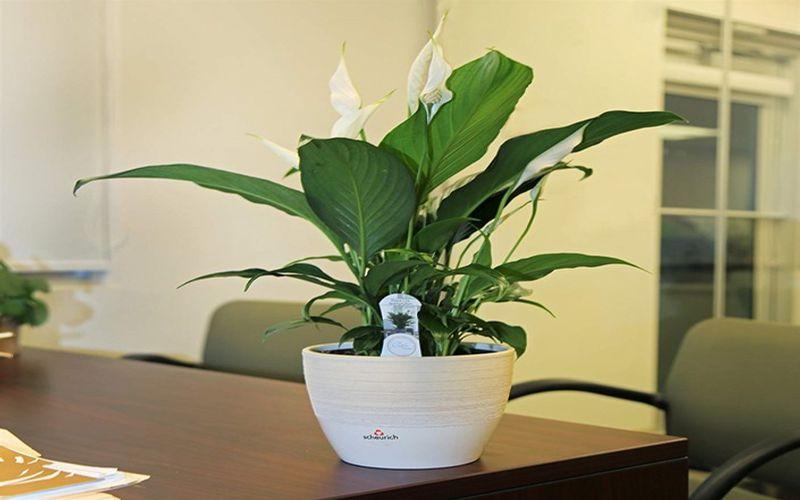
These are popular low-light indoor plants. Moreover, the Peace lily can tolerate neglect. Elegant white flowers bloom on large leaves. The only need is ample water or else the foliage will wilt. But watering will usually perk up wilted foliage.
These shade-loving plants should be placed where it receives indirect light. And keep them away from pets as they are toxic.
Light: Partial shade to full shade
Water: Moderate to high moisture
Color Varieties: Dark green foliage, white flowers
35. Prayer Plant
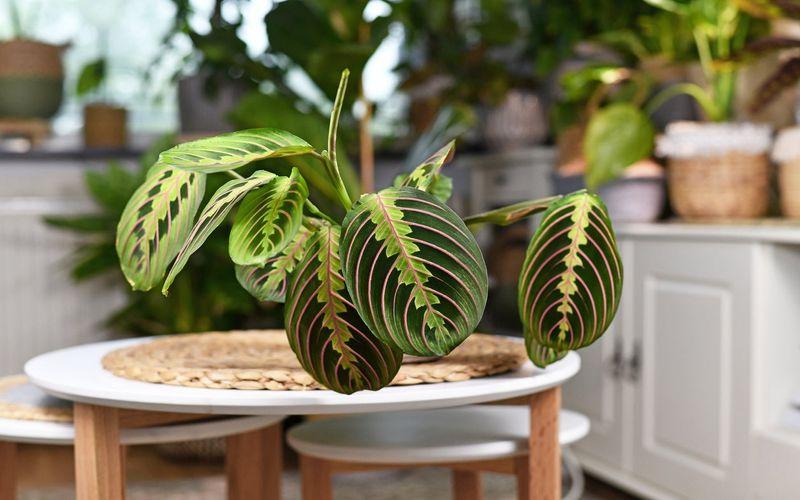
These are small, low-growing tropical plants with attractive tricolor leaves. They grow well indoors if you provide them with warmth and humidity. Also, they are quite tolerant to low-light conditions. However, direct sunlight can burn their foliage. A window that gets bright, indirect light is perfect for them.
Light: Partial shade to full shade
Water: Moderate to high moisture
Color Varieties: Deep green leaves with yellow and red markings
36. Corn Plant

This Dracaena genus produces thick canes, or stems, from which long, narrow leaves grow. They are popular indoor plants, as they reach about six feet tall indoors. But corn plants should not be exposed to direct sunlight, as this can wilt and burn the leaves.
Bright, indirect light is perfect, though they can survive a fairly shady spot. Keep the pets away from Corn plants because they are toxic.
Light: Partial shade
Water: Moderate moisture
Color Varieties: Green foliage
37. Polka Dot Plant
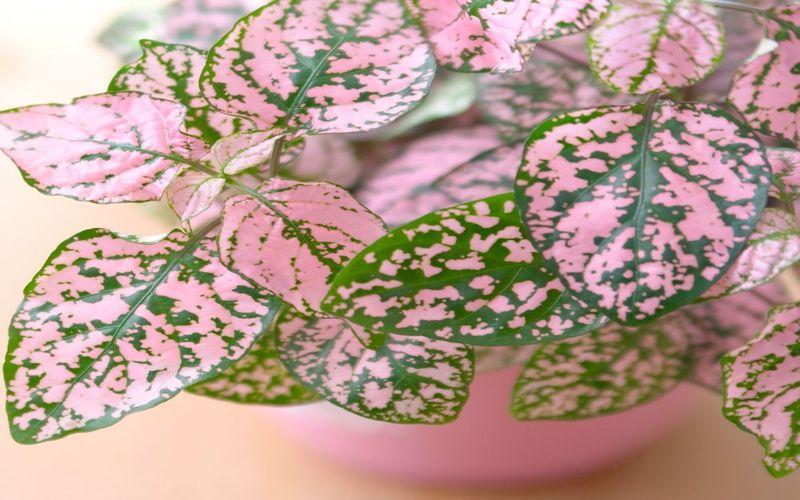
These indoor plants are grown for their eye-catching foliage. They are commonly known for their leaves with a pink base color and green spots. Also, there are other color varieties as well.
Polka dot prefers some shade both indoors and outdoors. Too much sun can damage the foliage colors. An east- or south-facing window is ideal for this plant.
Light: Partial shade
Water: Moderate moisture
Color Varieties: Spotted leaves in pink, green, purple, red, white
38. Gloxinia

Though Gloxinia can’t survive in a completely dark room, they can bloom beautifully anywhere they can receive bright, indirect light away from the full sun. A close relative of African violet, Gloxinia blooms large velvety, trumpetlike flowers in a variety of jewel-like colors. Use warm water and do not wet their foliage.
Light: Bright, indirect light
Water: When the soil is dry to the touch
Color varieties: White to pink to red to blue to purple blooms and green leaves
39. Moth orchid
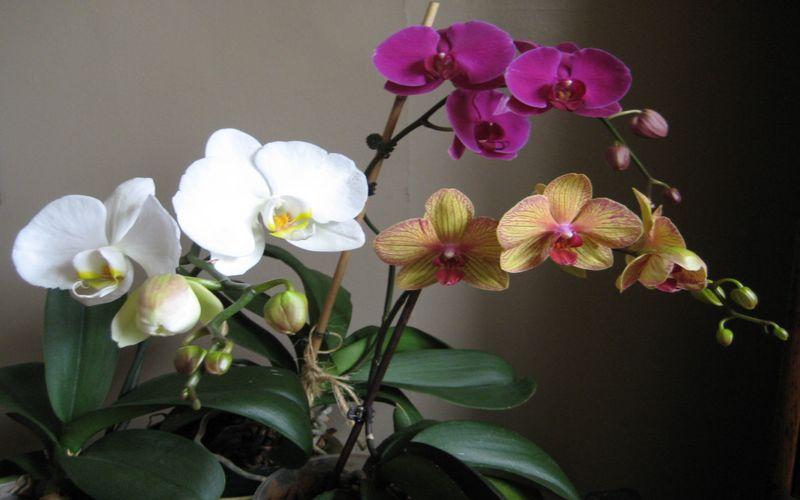
Adding Phalaenopsis, commonly called moth orchid, to any room in your home will enhance its ambiance. Their long blooming period and low light requirements make them ideal for low light conditions.
In addition to their wide color range and bicolor, moth orchids generally come in two sizes: standards that grow 18-24 inches tall and dwarfs that grow to less than 12 inches.
The moth orchid grows from bark or moss and should only be watered when that material feels dry. Overwatering is more dangerous than underwatering, so don’t be afraid to let it dry out a bit.
Light: Low light or bright, indirect light
Water: When the growing medium is dry to the touch
Color varieties: they bloom in vibrant red, salmon-orange, pink, purple, frosty white, and even black. And blue/green foliage.
40. Yuca cane
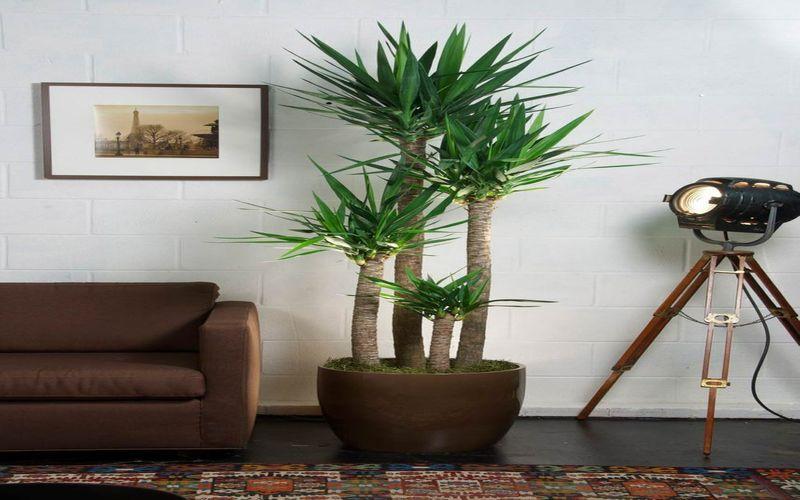
You probably picture a sunny desert when you think of yucca plants. However, indoors, you can enjoy its leathery green, lacelike foliage, and attractive tan bark almost as much in a dark corner. As long as you don’t overwater it, your plant will do just fine in a dark room rather than a sunny spot.
Light: Low light or bright indirect light
Water: When the soil is dry to the touch
Color varieties: Yellow and green variegated leaves
Conclusion
The mentioned low light indoor plant does very well in lower light conditions. Also, most of them do not require much maintenance. Thus, this makes them ideal for both beginners and people who are fond of growing beautiful plants without too much work and light.
As you have seen enough low-light indoor plants, now it’s time to pick one and start growing them to enhance your home.
Related Posts
- Bonsai for Beginners in India [Update 2024]

- 15 Best Plants for Front Door Entrance India | Auspicious plants for front door

- 10 Study Table Decoration Ideas That Will Make You Love Learning

- Revive Your Bonsai Tree with These Proven Techniques!

- Top 15 Benefits of Bonsai Plants that will Make your Life Awesome

- Top 10 Indoor Plants for Cafes to Enhance Decor & Comfort



